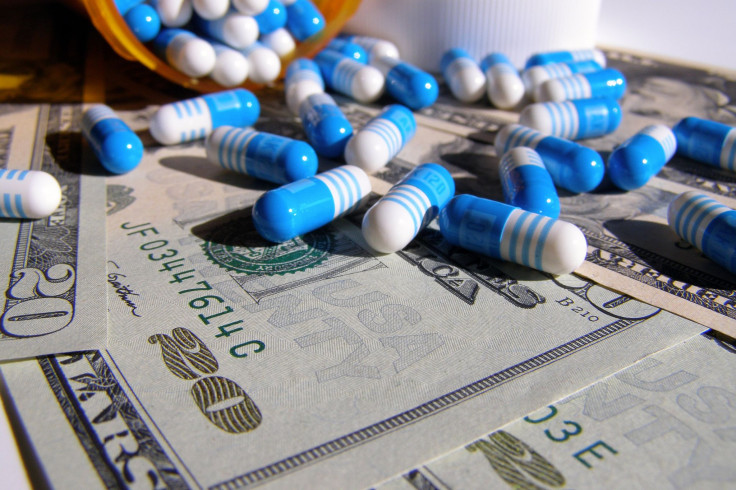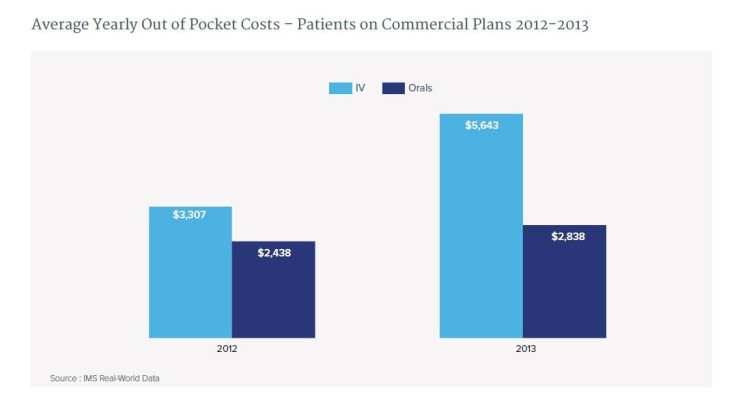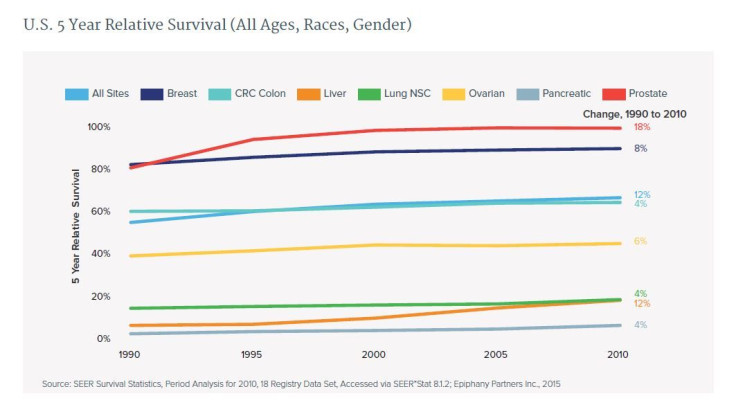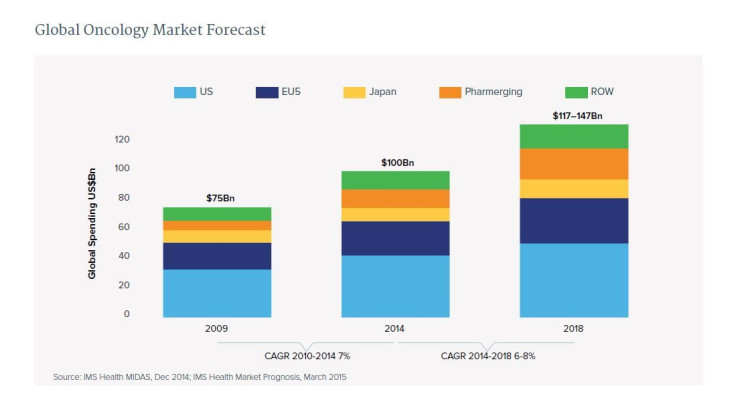Cancer Drug Costs Hit All-Time High: The $100 Billion Disease

The world spent an all-time high of $100 billion on cancer medicines in 2014, up 33 percent from $75 billion just five years ago. Overall, global spending on cancer drugs has risen at an annual rate of 6.5 percent for the past five years, but jumped 10.3 percent in 2014, a new report by the IMS Institute for Healthcare Informatics states.
The spending is concentrated in only a handful of nations. The U.S. and the five largest European countries -- Britain, France, Germany, Italy and Spain -- make up two-thirds of global spending on these medicines. The U.S. spent $42.5 billion on cancer drugs in 2014, which accounted for 11.3 percent of the nation’s total spending on all drugs. The "pharmerging" group of countries (see graph below) represents 17 nations that IMS has identified as likely to represent 50 percent of global growth in pharmaceutical sales over a five-year period through 2017.

The IMS Institute for Healthcare Informatics, a leading health analytics company, released a report Tuesday analyzing global spending for cancer drugs. The company used a formula to calculate the cost of these medicines, which included therapeutic treatments and supportive care, but did not factor in price discounts and rebates offered by pharmaceutical companies to many insurers and government-run healthcare systems.
The rapid rise in spending is due partly to the fact that pharmaceutical companies are charging more for new drugs that are considered more effective than old ones, and have set high prices for treatments that serve only a handful of patients with rare forms of cancer. Sales of the specialty drugs have grown by 14.6 percent over the past five years -- faster than the average rate of all cancer treatments -- and now make up about half of cancer-related spending worldwide. For example, a drug for advanced prostate cancer called Xofigo, created by Bayer, costs $12,657 per patient for a one-month course of treatment. The drug has generated $216 million in sales in its first two years on the market.
The report also shows that American patients are bearing the brunt of higher prices. The average cost of all treatments that a cancer patient undergoes over the course of a month has risen by 39 percent in the past 10 years. Though a portion of their bill may be covered by insurers, Americans still saw a 71 percent increase in out-of-pocket costs for intravenous drugs in just one year, from 2012 to 2013.

The good news is that patients are staying alive longer thanks to earlier diagnosis and better treatments. Today in the U.S., two-thirds of cancer patients survive for at least five years after diagnosis. In 1990, only about half of patients lived that long. These improvements have also increased overall spending, because a patient today will be treated for a longer period of time than a patient a decade ago.

Patients have also enjoyed access to brand new drugs that have entered the market over the past five years -- 45 new cancer drugs made their debut between 2010 and 2014 and a promising pipeline of immune-oncology treatments will likely deliver many more over the coming years. IMS predicts that global spending on cancer medicines will continue to rise by 6 to 8 percent annually through 2018 and could reach $147 billion by 2018.

© Copyright IBTimes 2025. All rights reserved.






















